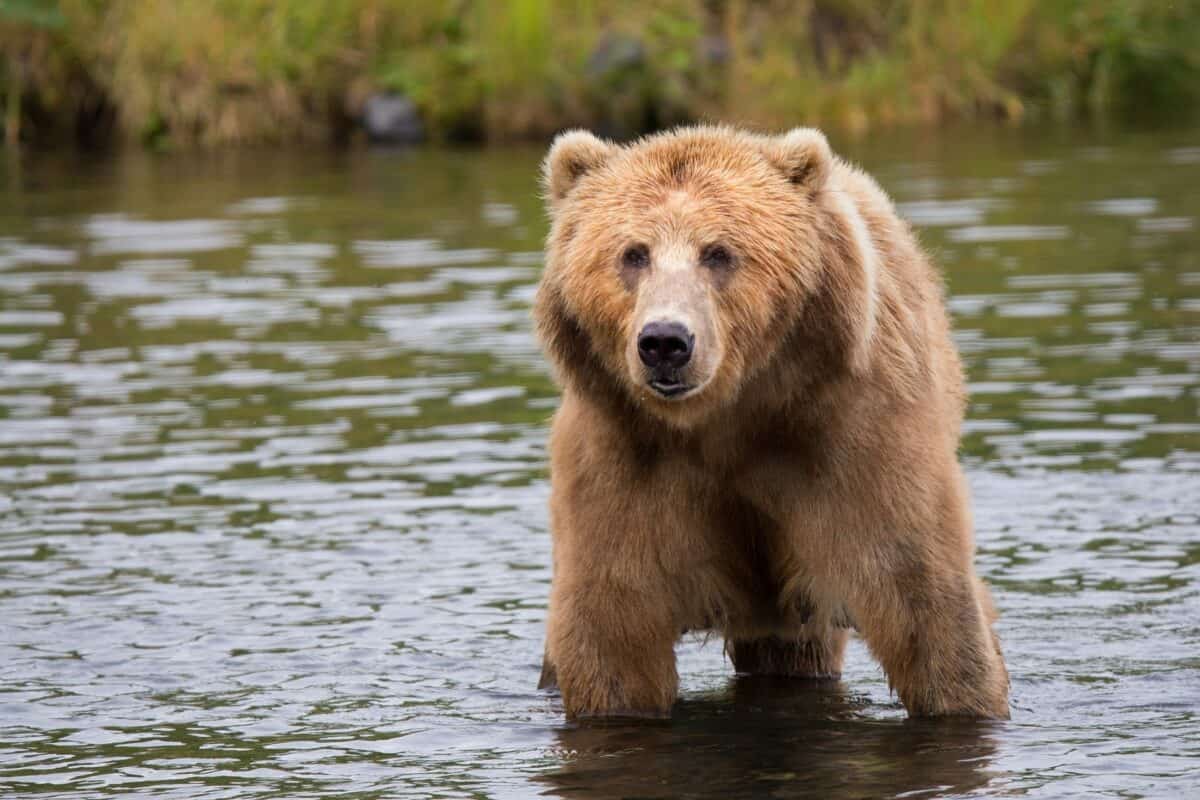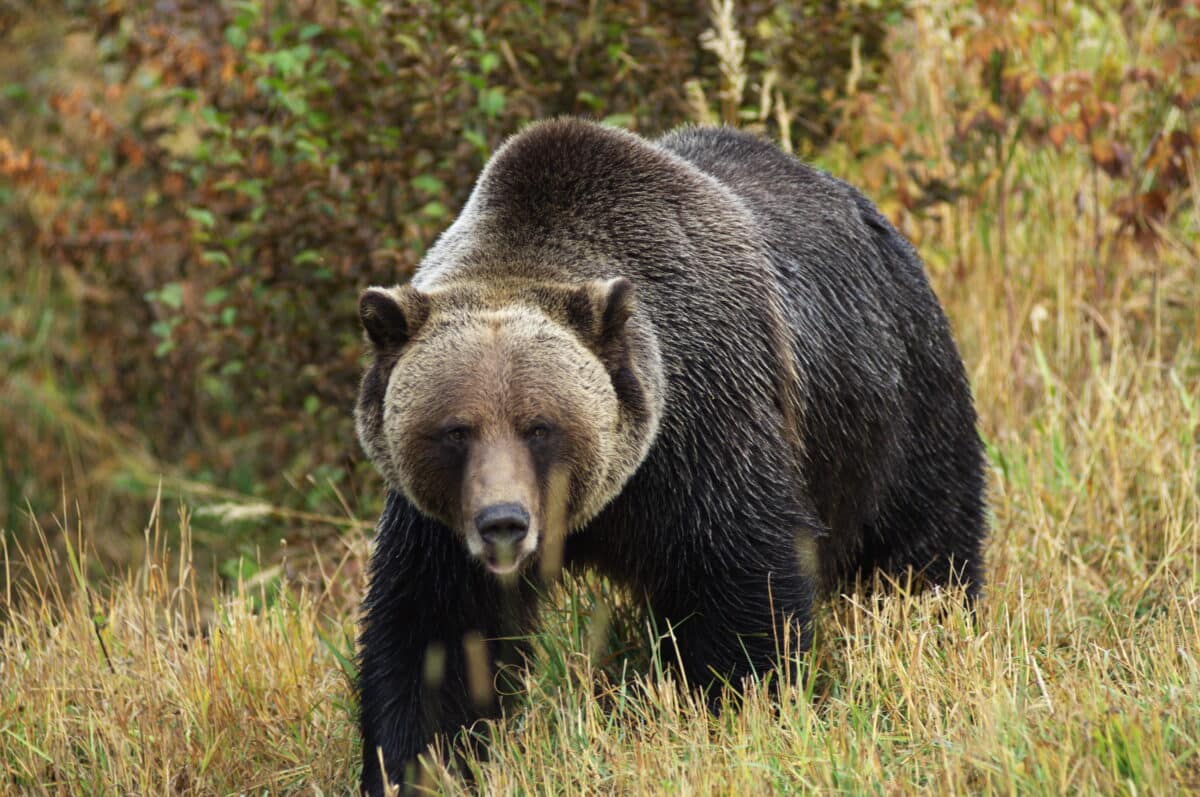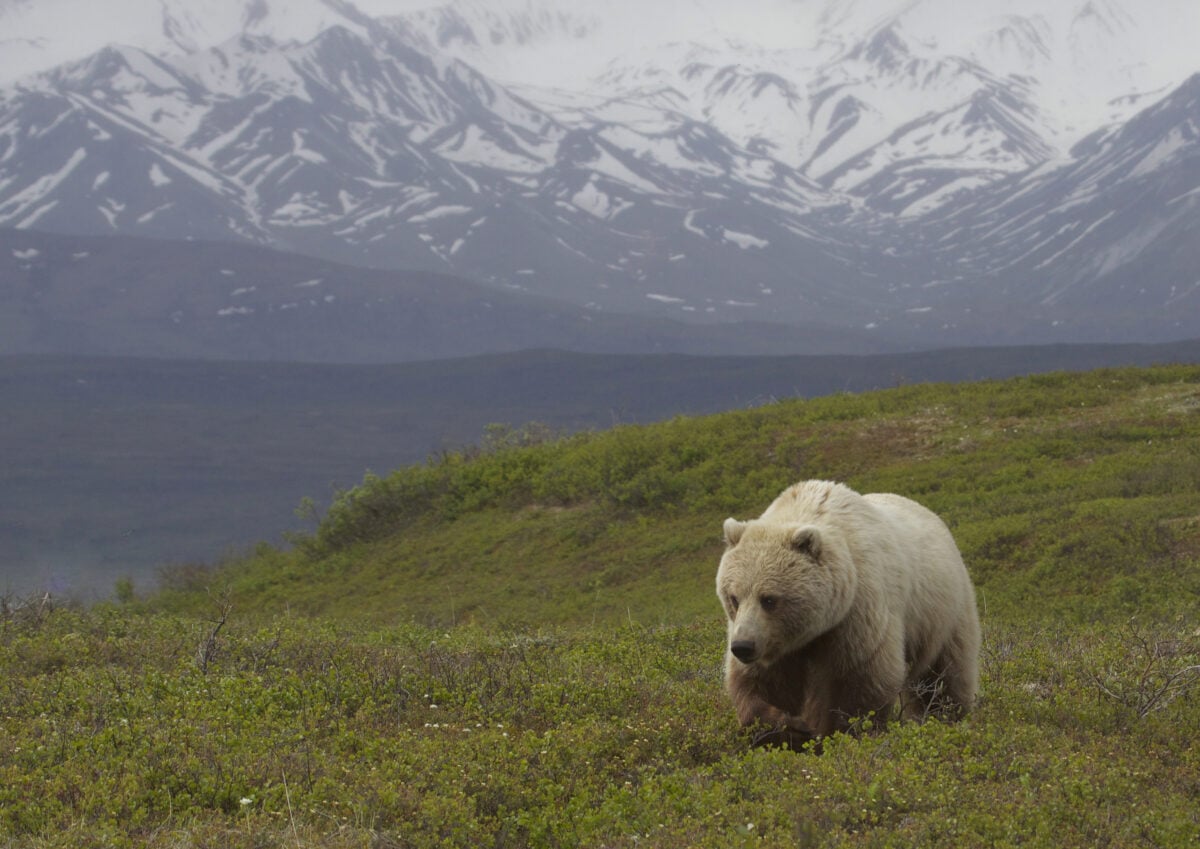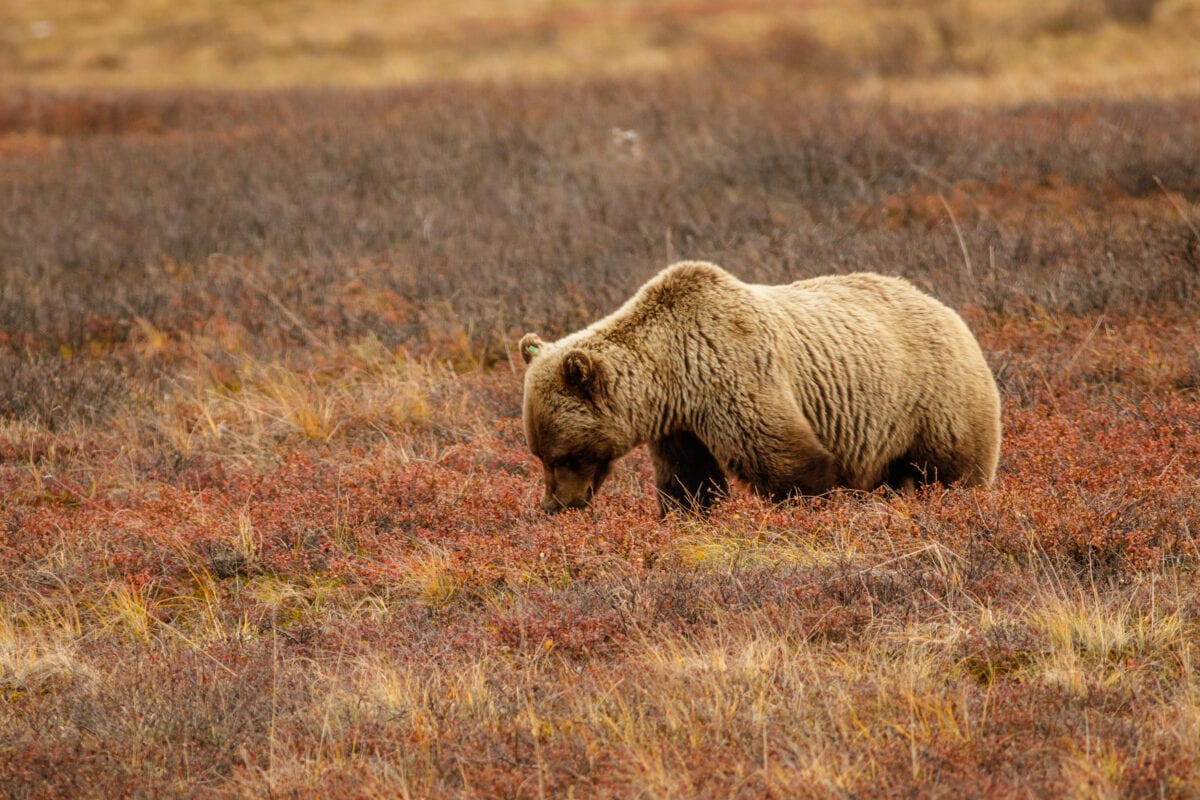Bears have fascinated humans for centuries with their powerful presence, intelligence, and complex behaviors. These magnificent mammals display a wide range of actions that have evolved over millions of years, helping them survive and thrive in diverse environments across the globe. Understanding bear behavior isn’t just interesting—it’s crucial for conservation efforts and human safety in bear country. Wildlife biologists and bear experts have spent decades studying these animals in their natural habitats, decoding their behaviors and communication methods. Let’s explore twelve fascinating bear behaviors explained by the experts who know them best.
Hibernation Not Just a Long Nap

Bears are famous for their winter dormancy, but experts clarify that true hibernation is more complex than many people realize. Unlike smaller hibernating mammals that drop their body temperature dramatically, bears maintain a temperature just a few degrees below normal during their winter sleep. Dr. Lynn Rogers of the North American Bear Center explains, “Bears enter a state called torpor, where their heart rate slows from 40-70 beats per minute to just 8-12 beats per minute, they don’t eat, drink, urinate, or defecate for months, yet they don’t develop toxicity.” This remarkable physiological adaptation allows bears to conserve energy during food-scarce winter months.
Perhaps most impressive is that female bears give birth during this dormant period and nurse their cubs while still not eating or drinking. Research from Washington State University found that bears can lose up to 40% of their body weight during winter dormancy yet emerge in spring with no significant muscle atrophy or bone loss. Scientists are studying these mechanisms for potential applications in human medicine, particularly for treating osteoporosis, kidney disease, and muscle wasting conditions. Understanding this specialized form of hibernation continues to provide valuable insights into bear physiology and survival strategies.
Standing Upright Curiosity, Not Aggression

When a bear stands on its hind legs, many people interpret this as threatening behavior, but bear experts explain it’s actually quite the opposite. Standing upright is primarily an information-gathering posture that allows bears to better see, hear, and smell their surroundings. “Bears have relatively poor eyesight compared to their excellent sense of smell,” says Dr. Gordon Stenhouse, research scientist with the Foothills Research Institute Grizzly Bear Program. “Standing gives them a better vantage point and improves their ability to detect potential food sources, threats, or objects of interest.”
Wildlife biologist Dr. Kate Kendall, who has studied bear behavior for over 30 years, notes that this behavior is particularly common when bears detect an unusual scent or sound but can’t immediately identify it. “A standing bear is typically a curious bear, not an aggressive one,” she explains. “If a bear feels threatened enough to attack, it will usually remain on all fours, with ears flattened and head lowered.” Understanding this distinction is crucial for people who might encounter bears in the wild, as misinterpreting this non-aggressive behavior could lead to unnecessary panic or inappropriate responses during bear encounters.
Bluff Charging The Intimidation Tactic

One of the most misunderstood bear behaviors is the bluff charge—a dramatic display where a bear rushes forward toward a perceived threat but stops short of actual contact. Bear behaviorist Dr. Stephen Herrero, author of “Bear Attacks: Their Causes and Avoidance,” explains that bluff charges are primarily defensive behaviors intended to create distance. “The bear is essentially saying, ‘You’re too close, and I’m uncomfortable,'” he notes. Research indicates that the vast majority of charges by brown bears are bluffs, with the bear having no intention of making physical contact.
According to Alaska Department of Fish and Game bear expert Tom Smith, distinguishing between a bluff charge and a predatory charge is critical but challenging in the moment. “A bluff-charging bear often has its head raised, ears up, and may huff, woof, or clack its teeth. It might also swat the ground or vegetation,” Smith explains. “A predatory bear, by contrast, tends to approach silently with ears back and head low.” Experts recommend standing your ground during a bluff charge rather than running, which could trigger a pursuit response. Studies show that bear spray has proven effective in deterring both bluff charges and actual attacks, with success rates over 90% when used properly.
Tree Marking Olfactory Communication

Bears frequently engage in tree marking behavior, where they scratch, bite, and rub against trees, leaving both physical marks and scent signals. Dr. Michael Proctor, a Canadian wildlife biologist specializing in bear ecology, explains that these marks serve as a complex communication system. “It’s essentially a chemical Facebook,” says Proctor. “Bears can determine the sex, reproductive status, size, and identity of other bears that have visited the same tree.” This behavior is particularly common during mating season when males are seeking receptive females and establishing dominance hierarchies.
Research using motion-activated cameras has revealed fascinating patterns in tree-marking behavior. Dr. Rachel Wheat’s studies in Alaska showed that particular trees become community signposts, with multiple bears visiting the same trees year after year. These “bear trees” typically have distinctive characteristics—they’re often located near trails, have smooth bark, and stand out in some way from surrounding vegetation. The height of claw marks and bite marks can indicate the size of the bear, while the complex chemical messages in the bear’s rubbed oils contain information that humans can’t detect but other bears can read clearly. This invisible communication network helps bears, which are generally solitary animals, maintain social connections and avoid potential conflicts.
Jaw Popping and Moaning Vocal Communication

Bears have a sophisticated vocal communication system that includes a variety of sounds unfamiliar to most people. One distinctive vocalization is jaw popping or chomping—a rapid clicking noise created by quickly opening and closing the mouth. Dr. Barrie Gilbert, who has studied grizzly bears for over 40 years, explains that this sound typically indicates nervousness or stress. “It’s essentially saying ‘I’m uncomfortable with this situation, please back off,'” Gilbert notes. Black bears, brown bears, and polar bears all use variations of this warning signal, though the specific contexts may differ slightly between species.
Bears also communicate through moans, huffs, woofs, and growls, each with specific meanings. Research by Dr. Owen Nevin at the University of Cumbria found that mother bears use different vocalizations when communicating with their cubs versus when warning off potential threats. Cubs themselves have distinctive vocalizations, including a nursing hum that indicates contentment and high-pitched bawls when distressed. Perhaps most surprising to many people is that bears rarely roar like they do in movies. Dr. John Beecham, a bear biologist with over 40 years of experience, notes that Hollywood has created misconceptions about bear vocalizations: “The dramatic roars attributed to bears in films are usually sound effects created using lion or tiger roars, which sound more dramatic but aren’t accurate representations of real bear vocalizations.”
Food Caching Planning for Scarcity

Bears demonstrate remarkable foresight through food caching behavior—hiding food items for future consumption. According to Dr. Christopher Servheen, former Grizzly Bear Recovery Coordinator for the U.S. Fish and Wildlife Service, this behavior shows sophisticated cognitive abilities. “Bears remember dozens, perhaps hundreds, of food cache locations across their home range,” Servheen explains. “They’ll often cache high-value foods like animal carcasses, digging shallow pits and covering them with soil, leaves, and vegetation to hide them from other scavengers and mask the scent.” Studies using GPS collars have tracked bears returning to caches days or even weeks later, demonstrating their exceptional spatial memory.
This behavior varies somewhat between bear species and habitats. Dr. Karyn Rode of the USGS Polar Bear Research Program notes that polar bears cache marine mammal carcasses but use different techniques than their forest-dwelling relatives. “Without soil or vegetation, polar bears will sometimes bury food in snow or submerge it in shallow water along shorelines,” she explains. Food caching becomes particularly important before hibernation and during seasons of abundance when bears can harvest more food than they can immediately consume. Research from Yellowstone National Park showed that grizzly bears would cache portions of elk carcasses in up to eight different locations, effectively “spreading out” their food resources and reducing competition with wolves and other bears.
Nursing and Cub Care Dedicated Parenting

Female bears display extraordinary dedication to their offspring, with nursing and cub care behaviors that rank among the most devoted in the mammalian world. Dr. Karen Noyce, who has studied black bear reproduction for decades, explains that mother bears nurse their cubs for 12-18 months, though the composition of their milk changes throughout this period. “Bear milk is extremely rich in fat—up to 33% in hibernating black bears—which helps cubs grow rapidly,” Noyce states. This high-fat milk is crucial because cubs are born extremely small relative to their mothers, weighing just 1/300th to 1/500th of the mother’s weight (compared to human babies at about 1/20th of maternal weight).
Beyond nutrition, mother bears invest heavily in teaching survival skills. Wildlife biologist Dr. John Beecham’s research has documented mother bears demonstrating specific foraging techniques, which cubs learn through observation and practice. “We’ve observed mothers showing cubs how to strip bark for cambium, flip rocks for insects, and even use tools in limited contexts,” Beecham notes. Mother bears are also fiercely protective, with documented cases of females fighting off male bears, wolves, and even tigers to protect their young. This prolonged dependency period, which can last 1.5 to 2.5 years depending on the species, allows cubs to learn the complex set of skills needed for survival in diverse and challenging environments before family separation occurs naturally.
Play Behavior More Than Just Fun

Bear play behavior, particularly among cubs and juveniles, serves critical developmental functions beyond simple entertainment. Dr. Marc Bekoff, professor emeritus of ecology and evolutionary biology at the University of Colorado, explains that play helps young bears develop physical coordination, social skills, and predatory abilities. “When cubs wrestle, chase, and play-fight, they’re actually practicing behaviors they’ll need as adults,” Bekoff notes. His research has documented distinct play signals in bears—such as a specific facial expression with a relaxed, open mouth—that communicate “this is play, not aggression” to playmates.
Interestingly, play behavior isn’t limited to young bears. Dr. Else Poulsen, author of “Smiling Bears: A Zookeeper Explores the Behavior and Emotional Life of Bears,” has documented adult bears engaging in playful activities throughout their lives. “Contrary to the perception of bears as solely serious and aggressive animals, healthy adult bears with sufficient resources will play with objects, water, and sometimes even trusted companions,” Poulsen reports. Object play is particularly common, with bears manipulating items like sticks, stones, and man-made objects. This behavior helps bears maintain cognitive flexibility and may serve stress-reduction functions similar to those observed in other intelligent mammals. In rehabilitation settings, play behavior is considered an important indicator of psychological well-being and proper development.
Day Beds Strategic Resting

Bears create specialized resting spots called day beds that serve multiple purposes beyond simple comfort. Dr. Michael Pelton, who studied black bears for over 40 years at the University of Tennessee, explains that day beds are carefully selected locations where bears rest during daylight hours between feeding periods. “Bears typically create these beds in secluded locations with good visibility of their surroundings, often on hillsides or elevated areas that allow them to detect approaching threats,” Pelton notes. These beds are usually shallow depressions scraped into the soil or snow, sometimes lined with vegetation for comfort and insulation.
The strategic placement of day beds reveals sophisticated decision-making. Research by Dr. William Leacock found that bears in human-dominated landscapes often place their day beds in dense vegetation within sight of human activity but just beyond the distance where most people would detect them. In mountainous regions, day beds are frequently positioned to catch cooling breezes during summer or to capture warming sunshine in cooler months. GPS collar studies have shown that individual bears maintain multiple day bed locations throughout their territory, selecting different sites based on factors including temperature, food availability in the surrounding area, wind direction (which affects their ability to detect approaching threats through scent), and seasonal needs. This behavior demonstrates bears’ adaptability and their detailed knowledge of their home ranges.
Rubbing and Scratching Comfort and Communication

Bears regularly engage in rubbing and scratching behaviors that serve dual purposes of physical comfort and social communication. Dr. Kate Kendall, Research Ecologist Emeritus with the U.S. Geological Survey, has documented extensive use of “rub trees” by multiple bear species. “We’ve identified trees that have been used by generations of bears as rubbing posts,” Kendall explains. “These trees develop distinctive worn patches, often with embedded hair that we can collect for DNA analysis.” Her research utilizing hair snares at known rub trees has revolutionized non-invasive population monitoring of bears across North America.
Beyond communication, scratching serves important physical functions. Dr. Frank van Manen, Team Leader of the Interagency Grizzly Bear Study Team, notes that seasonal scratching increases dramatically during molting periods when bears shed their winter coats. “Bears use trees, rocks, and even man-made structures like power poles and cabin corners to relieve itching and help remove loose fur,” van Manen explains. Intriguingly, researchers have observed bears developing preferences for specific scratching surfaces, with some individuals returning to the same scratching posts year after year. The behavior also appears to have a stress-relief component, as bears in rehabilitation settings often increase scratching behavior during periods of anxiety or when introduced to new environments. This multi-purpose behavior highlights how bears have evolved efficient behaviors that serve both physical needs and social functions simultaneously.
Fishing Techniques Learned Specialization

Bears demonstrate remarkable problem-solving abilities and cultural learning through their diverse fishing techniques. Dr. Thomas Reimchen of the University of Victoria, who has studied bear fishing behavior for decades, has documented at least seven distinct salmon-catching methods used by coastal brown bears. “Some bears specialize in standing still in rapids and catching fish with their mouths, others wade and pounce, while some use their paws to pin fish against river bottoms,” Reimchen explains. These techniques are not instinctual but learned, with cubs observing and practicing their mother’s preferred methods before developing their own specialized approaches.
Regional differences in fishing techniques suggest cultural transmission of knowledge among bear populations. Research at Alaska’s Brooks Falls by the National Park Service has tracked individual bears over decades, documenting how fishing techniques evolve and spread through populations. Some bears become “specialists” in particular locations or methods—for example, focusing exclusively on fishing at waterfall edges where they can catch jumping salmon mid-air. Efficiency varies dramatically, with experienced adult bears catching up to 20 salmon per hour during peak runs compared to 1-2 per hour for inexperienced individuals. Dr. Barrie Gilbert’s studies found that bears will even adjust their fishing schedule to avoid competition, with subordinate bears fishing during less optimal times to avoid confrontations with dominant individuals. This behavioral flexibility and capacity for specialized learning highlights the cognitive sophistication of bears and their ability to develop expertise in specific survival skills.
Understanding Bear Behaviors Key to Coexistence

Understanding the complex behaviors of bears is essential for successful human-bear coexistence in an increasingly crowded world. As Dr. Chris Servheen notes, “Most negative bear-human interactions stem from misinterpretations of bear behavior or inappropriate human responses.” By recognizing that standing bears are curious rather than aggressive, that bluff charges rarely lead to contact, and that most bear vocalizations are warnings rather than threats, people can respond appropriately during encounters. Conservation efforts also benefit from behavioral knowledge, as understanding habitat needs, communication methods, and feeding patterns allows for more effective protection strategies.
Research into bear cognition, communication, and social structures continues to reveal these animals as far more complex than traditionally portrayed. Their ability to adapt to changing environments, learn specialized skills, and maintain sophisticated social networks through scent communication speaks to their remarkable intelligence. As climate change and habitat loss create new challenges for bear populations worldwide, this scientific understanding becomes increasingly valuable. Through continued research and public education about these fascinating behaviors, we can foster greater appreciation for bears and ensure their survival alongside human communities for generations to come. As Dr. Jane Goodall once remarked about intelligent mammals, “The more we learn about their complex social lives and emotional capacities.
Conclusion:

The behavior of bears is far more intricate and intelligent than their fearsome reputation might suggest. As revealed by leading experts and decades of research, bears are not just powerful predators or symbols of the wild—they are complex mammals with rich social lives, advanced problem-solving abilities, and finely tuned survival strategies. From tree marking and food caching to maternal care and playful antics, every behavior serves a purpose in helping these animals thrive in challenging environments.
Understanding these behaviors isn’t just fascinating—it’s essential. It helps scientists improve conservation strategies, enables communities to coexist more safely with bear populations, and deepens public appreciation for these magnificent creatures. The more we decode the language of bears—from their vocalizations to their body language—the better equipped we are to protect them and their habitats. As we continue to learn from the wild, bears remind us that even the most formidable animals are shaped by emotion, communication, and the will to survive.
- 16 Weird and Wonderful Facts About Lobster Biology - August 8, 2025
- 12 Dog Breeds That Thrive in Cold Climates - August 8, 2025
- 10 Fascinating Facts About Horse Vision - August 8, 2025

